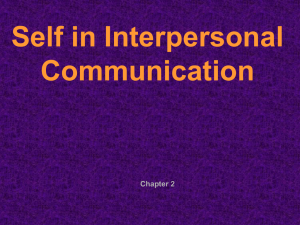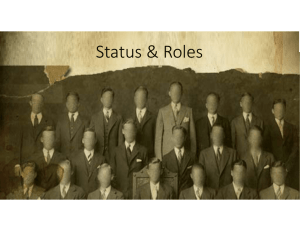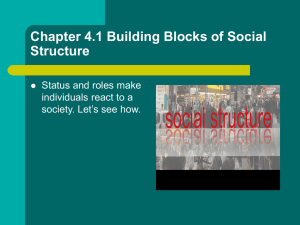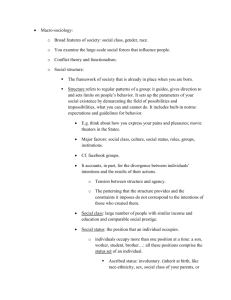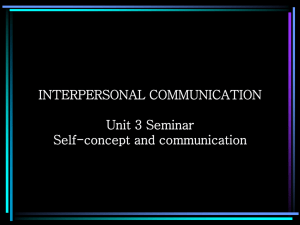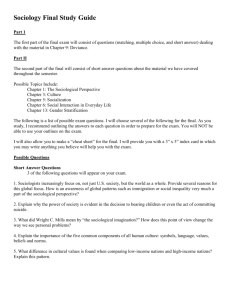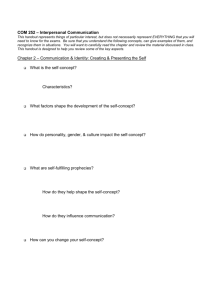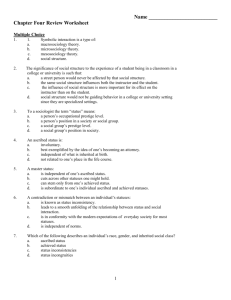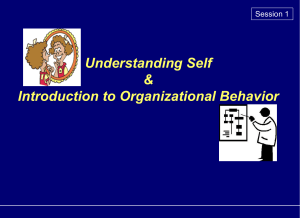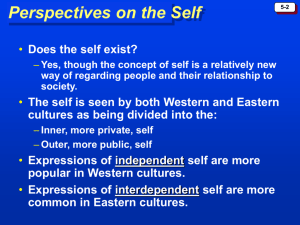(Self-concept) The self that we are aware of is our self
advertisement
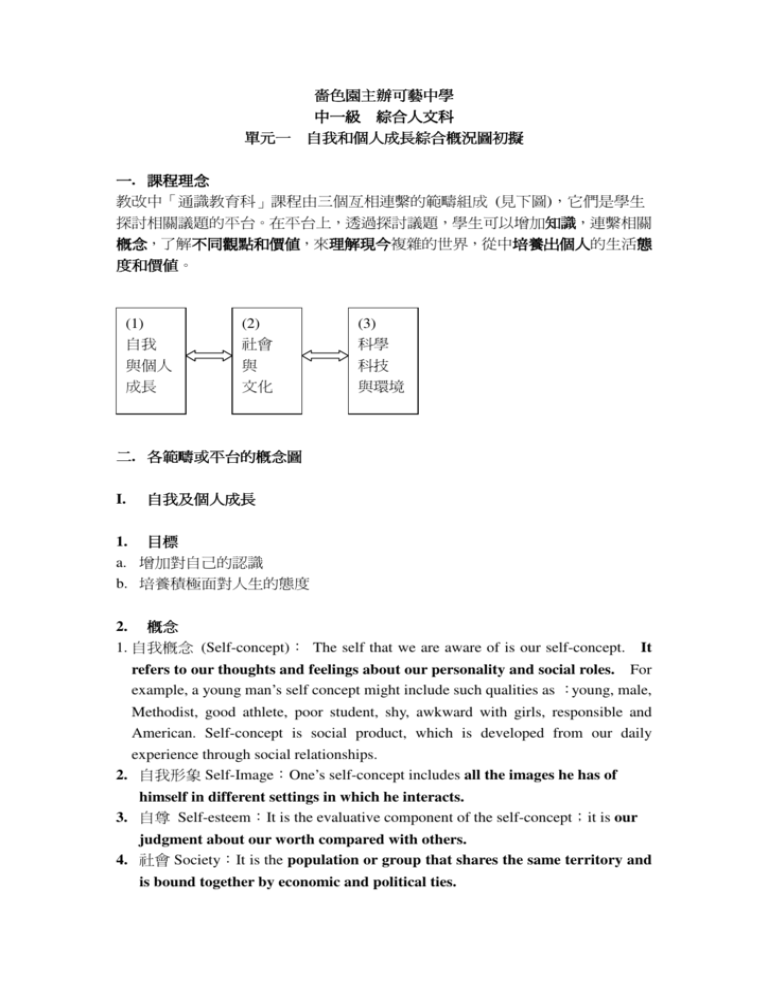
. !
"
(
) ! " # $ % & ' () & ' * + , ! " $ % - . / 0 # $ #
" 1 2 % & ' ( ) * 3 ! + , - 4 5 6 7 8 .. / 0 9 1
2 ) * (
(1)
; F
PC
Q
(2)
N O
P
R S
3. 4
5
6
7
8
9
:
I.
;
1. < =
a. / 0 :
b. > ? @
2.
1. ;
F
;
<
=
A
B
:
(3)
T
PU V
"
C
D
E
G
"
H
(Self-concept)I The self that we are aware of is our self-concept.
It
refers to our thoughts and feelings about our personality and social roles. For
example, a young man’s self concept might include such qualities as Iyoung, male,
Methodist, good athlete, poor student, shy, awkward with girls, responsible and
American. Self-concept is social product, which is developed from our daily
experience through social relationships.
2. ; F J K Self-ImageIOne’s self-concept includes all the images he has of
himself in different settings in which he interacts.
3. ; L Self-esteemIIt is the evaluative component of the self-conceptMit is our
judgment about our worth compared with others.
4. N O SocietyIIt is the population or group that shares the same territory and
is bound together by economic and political ties.
5. N
O
W
Social Structures I They are recurrent patterns of relationships.
X
Friendship, football games and lessons are some examples that repeatedly day
after day.
6. Y X /Z
InstitutionsIThey are a type of social structure. They are enduring
and complex social structures that meet basic human needs.
Examples are
family, economy, government, education and religion.
7. [ \ StatusIIt is a specialized position within a group. There are two main
types of statusesIachieved and ascribed statuses. Being a father or the president
of the PTA is an achieved status.
Sex and race are examples of ascribed status. It
provides broad outlines for interactions.
8. ] ^
RoleIOutlines provided by statuses are filled in by roles, which refer to
how people who occupy specific status ought to act and feel toward one
another OR sets of norms that specify the rights and obligations of each status.
9. _ ` Families IA family is relatively permanent groups of persons linked
together by ties of blood, marriage or adoption, live together and cooperative
economically and in the rearing of their children.
10. N S SocializationIIt is the process of learning the roles, statuses, and values
necessary for participation in social institutions.
11. N O a NormsIare shared rules of conduct that specify how people ought to
think and act.
12. b c d ValuesIare shared ideas about desirable goals or shared ideas about
things and matters.
4.
>
a.
?
!
They influence our decision-making.
@
Symbolic Interaction Theories (The Interaction School and Structural
School)
5. " (Concept Map)
(n $ )
"
F
* o p
* q
c
d
e
b
©
ª
~
<
;
r
q
/ i j
V
g
e
s
f
a
«
9
C
(^ n $ )
(¬ ­ )
*c f g h
*k `
*l *m 5
*) * '
r
H
_
t
u
c
W
w
x
y
z
n
{
y
|
O
*
q
r
=
y
}
#
t
¡
¢
i
j
k
l
_
m
g
o
p
`
q
r
P
f
v
r
u
h
s
¥
e
A
B
C
D
/£ ¤
¦ § ¨
* " : E F G H I : " J
* " K L M N % & O P Q R < : " : S T J
* U V W X Y V L : Z I [ \ ] S : P 7 O P (^ E F G _
`)J
